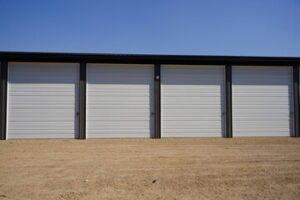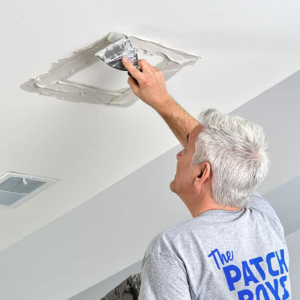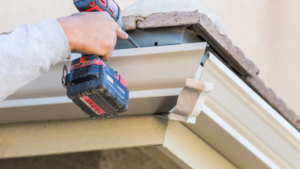Whether it’s due to downsizing, a move, or a divorce, many individuals find themselves in need of storage. This is where mini storage comes in handy.

A good facility offers a range of storage unit size options, and knowing what to look for will save you time and money. Uncover more at https://www.storagebayok.com/pages/contact.
Mini Storage units are available in a range of sizes. They start with the size of a closet and go up to more than 300 square feet. These spaces are available for both residential and commercial use. Many of these spaces are climate controlled to protect items like electronics, antiques and musical instruments. Some even have parking spots for cars and trucks. The simplest way to determine what size storage unit you need is to take an inventory of your belongings. Make a list of everything you plan to store, and then measure your largest items like furniture and boxes. This will help you estimate the size of your storage space and save money by not renting a larger unit than you need.
The smallest units, known as lockers, are about the size of a closet and are ideal for storing sporting equipment or seasonal items like holiday decorations and winter clothing. They also work well for college students who need to store dorm furniture and decor between semesters. These units typically have a roll-up metal door that allows them to be accessed quickly and easily.
A 5-by-10-foot storage unit is the next size up from a locker and offers about 50 square feet of floor space. It is large enough to fit a bedroom set, a small dresser and some boxes. It’s a great option for people who have just decluttered their home and need somewhere to put items until they can find permanent storage.
Storage units in the 10-by-20-foot range are large enough to fit the contents of a three-bedroom home. This includes a full set of furniture, appliances and stacks of moving boxes. They are also popular with business owners who need a place to store inventory or materials long-term.
The largest unit offered at most facilities is the 10’x30’ storage space, which provides 300 square feet of room. This is the most common size used by business owners who need long-term storage or to accommodate large items that won’t fit in a smaller unit. These units are also suitable for storing vehicles, including cars and boats.
Cost
The cost of mini storage depends on a variety of factors, including location and the type of contract you choose. The best way to determine the cost of a mini storage unit is to visit a few different facilities in your area. Ask about the size options they offer and check for operating hours. You also want to make sure that they provide a high level of security. This is especially important for units that hold valuable items.
In addition to determining the amount of space you need, you should also take into account the type of items you’ll be storing. For example, a large wardrobe may require an extra-large unit. In many cases, it is more economical to rent a larger unit than to purchase a smaller one. This is especially true when it comes to storing clothing, furniture, and other household items.
Mini storage is a great option for businesses that need extra space for inventory and equipment. It’s also a good alternative to renting warehouse space, which can be costly and inconvenient for small companies. Many storage companies offer discounts for business customers, making them a great choice for those who need extra storage space.
Another advantage of mini storage is that it is affordable for homeowners and apartment renters. People often use their attics, basements, and garages for additional living space, but they can’t always afford to add rooms. Mini storage offers a safe and secure place to store items that are not in immediate use.
Regardless of the type of storage you need, it is essential to label all of your boxes. This will help you find items quickly and efficiently. It’s a good idea to mark the contents of each box with a permanent marker or printed labels. Lastly, be sure to save an inventory list in case you need to access your items again.
Some people use Mini Storage as a place to keep their recreational vehicles, such as boats and trailers. This is particularly helpful in areas where local regulations prohibit parking these vehicles in driveways or on the street. This kind of storage is also used by collectors and hobbyists to store their supplies.
Security
The most effective security measures in a Mini Storage unit combine physical and electronic systems that are designed to protect the facility and its units from unauthorized access and theft. These include perimeter security, gate access control systems, and motion sensors. These systems allow security teams to monitor activity in real time and respond immediately to suspicious activity. They also provide a more comprehensive security solution than security guards and video cameras, which are prone to limitations like visibility and range.
A secure Mini Storage unit is important for people and businesses that need to store valuable items or extra household goods. Whether you’re moving or renovating your home, it’s important to make sure that your belongings are protected. That’s why a secure storage unit is such a convenient option. You can rent a unit for as long as you need it, and the facility has a variety of sizes to meet your needs. The cost of a storage unit varies depending on the contract type and the length of the rental period. Some facilities even offer flexible contracts to accommodate customers’ needs.
Mini Storage is a popular service for homeowners and business owners who need to store their belongings temporarily. It’s easy to see why people need storage space – life can be hectic, and it can be hard to keep up with all the things you have. Whether you’re downsizing due to marriage or divorce, moving, or just trying to figure out what to do with old furniture and appliances, renting a mini storage unit can help.
Using an access control system for your Mini Storage facility is an affordable way to increase security. This kind of system works by replacing traditional locks with keycards, fobs, or mobile devices. These kinds of systems are much more difficult to pick than traditional locks, so they’re a great choice for securing storage units. Additionally, some mobile apps let you download your security credentials onto your smartphone, which gives you more control over your storage. This makes it easier to monitor your storage unit from anywhere, at any time.
Access
Storage facilities provide convenient and affordable places to store items that don’t fit in your home or office. They also offer a secure location to keep your belongings safe and dry. But, before you rent a storage unit, there are a few things to consider. First, you’ll want to ensure that your storage facility has a security fence and cameras to deter burglars. You’ll also want to make sure that the facility is clean and well-lit. You should also ask about the cost and contract length. A good facility will offer flexible contracts, allowing you to settle on a term that fits your budget.
A mini-storage building is a storage and warehousing service within buildings or spaces that are used by individuals to store their personal effects and by businesses to store materials for the operation of an industrial or commercial enterprise located elsewhere. Storage spaces are rented for a specific period of time, and access to them is provided through lockable doors. Storage spaces may not be used for workshop purposes or as residential living space.
The hallmark of a great mini-storage facility is a healthy range of unit sizes. Different customers have different storage needs. Some are looking for a place to store recreational vehicles, such as cars and boats. Others need a place to store supplies for their hobbies. For this reason, it’s important to find a facility that offers a variety of sizes and prices.
Another consideration when choosing a mini storage facility is its availability. Some are open 24 hours a day, while others have different opening times. If you’re planning to use a mini storage facility, be sure to verify the operating hours before making your final decision.
If you’re renting a storage unit, it’s a good idea to place items you need often toward the front of your unit. This will save you from having to dig through boxes to find them. You can mark these boxes with a label or paint them a special color to help you find them. If you’re storing seasonal items, it’s best to put them toward the front of your unit as well.








